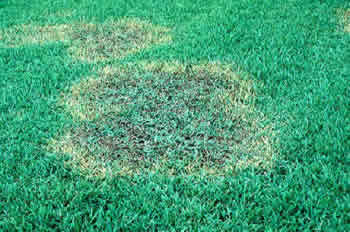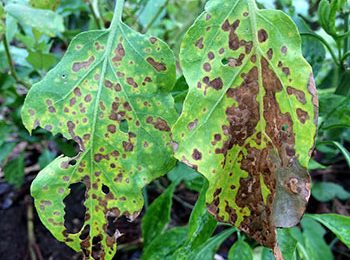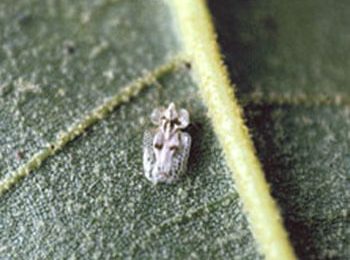Brown Patch Fungus
Heavy thatch, high humidity, lush growth and heavy moisture are ideal conditions for brown patch. Large, irregular circular areas up to several feet in diameter of a brownish gray color indicate brown patch.

Heavy thatch, high humidity, lush growth and heavy moisture are ideal conditions for brown patch. Large, irregular circular areas up to several feet in diameter of a brownish gray color indicate brown patch.

This fungus causes irregularly shaped brown spots on leaves, varying in size from pinpoints to half an inch across. They often merge to cover whole leaves and may cause early leaf drop. The centers of large spots become grayish on the upper surface of leaves as a result of spore production by the fungus.

(Length: 1/2″ – 3/4″) Larvae are greenish with many black spots. Adults are dingy brown moths with a wingspan of about 3/4″. The larvae feed on grass blades and noticeable injury appears within two weeks.

(Length: 1/16″- 3/8″) Scale insects are common pests to many trees and shrubs, are less than 1/8″ long and generally blend in with the host plant. Heavily infested plants are often covered with small disk-like or waxy coverings which look like tiny bumps on the plant leaves or stems. The scale is underneath each covering feeding on the juices of the plant.

(Length: 1″ – 1 1/2″) Mole crickets live in the soil and feed on grass stolens and roots. Bahia appears to be their favorite grass. They are most active at night, especially after a rain and when the temperature is above 70 degrees.

(Length: 3/16″ long or less) The typical adult lace bug is small and rectangular with an overall flattened appearance. In most species, the adults are cream colored with patches of brown or black. Both adults and nymphs injure the host plant by piercing the leaves and sucking the plant juices causing foliage discoloration, reduced plant vigor and premature leaf drop.
A common disease on St. Augustine grass that occurs during periods of warm temperatures, high humidity and prolonged leaf wetness. The disease causes irregular gray, dirty yellow or tan colored spots with brown or purple borders on leaf blades.

(Length: 1/20″ – 1/8″) Chinch bug adults are grey-black insects with short white wings. They suck juices from plants such as grass and corn. In St. Augustine grass, their damage appears as a spot or brown patch with a dead or dying center and a yellowish margin.

(Length: 1/16″- 1/8″) Aphids, or “plant lice”, are soft-bodied pear shaped insects generally less than 1/8 inch long. Their color varies by species, but the common ones are usually green, yellow or black. They have the ability to reproduce rapidly, and their populations are most abundant in the spring.